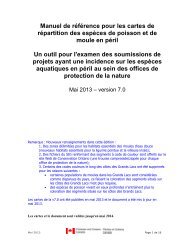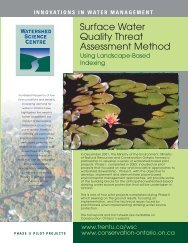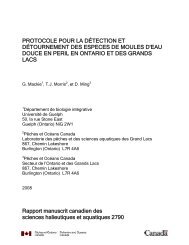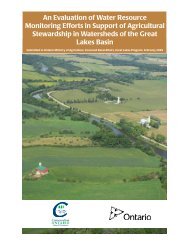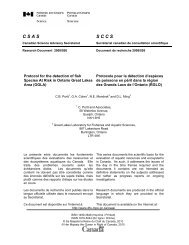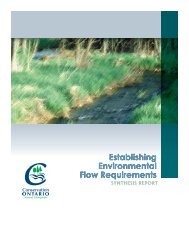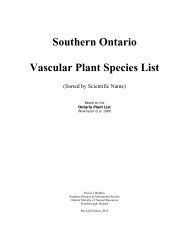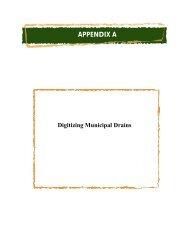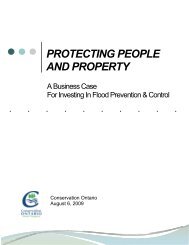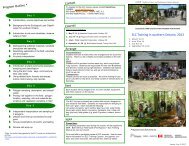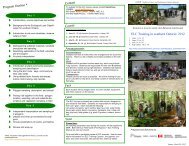Southern Ontario Vascular Plant Species List - Conservation Ontario
Southern Ontario Vascular Plant Species List - Conservation Ontario
Southern Ontario Vascular Plant Species List - Conservation Ontario
You also want an ePaper? Increase the reach of your titles
YUMPU automatically turns print PDFs into web optimized ePapers that Google loves.
Total Number of <strong>Species</strong><br />
John Morton and Joan Venn, University of Waterloo, published A Checklist of the Flora<br />
of <strong>Ontario</strong> - <strong>Vascular</strong> <strong>Plant</strong>s in 1990. The total number of species in the province at that<br />
time was 2,888 species (including subspecies and varieties). In 1998, the <strong>Ontario</strong> <strong>Plant</strong><br />
<strong>List</strong> was published by the <strong>Ontario</strong> Forest Research Institute, a branch of the <strong>Ontario</strong><br />
Ministry of Natural Resources, which provided a listing of 3,340 vascular plants (tree,<br />
shrub, herbaceous and fern species). A more current number of over 3,400 plant species<br />
is listed on the Natural Heritage Information Centre (NHIC) website.<br />
Our provincial flora is dynamic in nature, changing from year to year. Each year seeds<br />
from non-native species are introduced into new environments within the jurisdictional<br />
boundary of <strong>Ontario</strong>. Sometimes these are accidental introductions, where seeds are<br />
attached to incoming railway cars, boats, or automobiles. Other introductions are a<br />
consequence of planting horticultural species in urban landscapes, and the subsequent<br />
dispersal of seeds into surrounding areas.<br />
There are also a few instances when plants were deliberately introduced into our flora.<br />
For example, White Mulberry (Morus alba) was planted in eastern north America to<br />
provide a food source for the Mulberry Silkworm (Bombyx mori). It was hopped that a<br />
North American silk industry could be developed replacing the importation of silk from<br />
China and Japan. However, the invention of modern day synthetic materials put an end to<br />
this endeavour in the mid 1940’s. Today this introduced tree species from northern China<br />
is found in <strong>Ontario</strong>, Quebec and most of the United States.<br />
Another reason for updating this species list is the discovery of previously unknown<br />
native plants species after the release of the OPL in 1998. This includes the addition of<br />
Swamp Cottonwood [Populus heterophylla], discovered in Essex County; Dwarf<br />
Dandelion [Krigia virginica] in Pinery Provincial Park, and Trailing Bush Clover<br />
[Lespedeza procumbens] discovered in Haldimand County. There are still some regions<br />
of the province that are poorly botanized and may still yield some new discoveries to our<br />
botanical flora.<br />
Some native species are disappearing from our flora as a result of the introduction of<br />
fungal pathogens which have been detrimental to some of our native trees. Two species in<br />
particular, American Chestnut (Castanea dentata) and Butternut (Juglans cinerea) are<br />
disappearing due to the introduction of infectious microorganisms. Chestnut blight and<br />
Butternut canker, along with a loss of suitable habitat have the potential to eliminate these<br />
species from our flora. Other plants such as Ginseng (Panax quinquefolius) are<br />
disappearing as a consequence of the over harvesting of its underground tubers.<br />
As a result of these influences, the total number of species in <strong>Ontario</strong> will always be<br />
fluctuating to some extent. At best all we can do is provide a listing of the observed<br />
documented plant species, and continue to protect the varied habitats that are essential for<br />
their survival.<br />
iv



